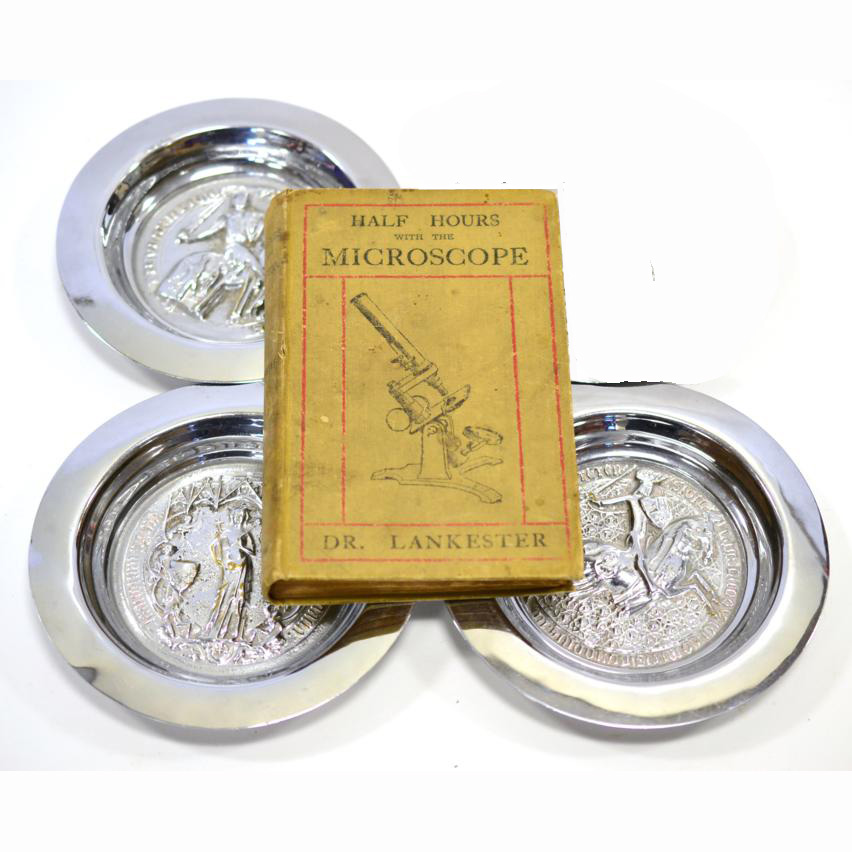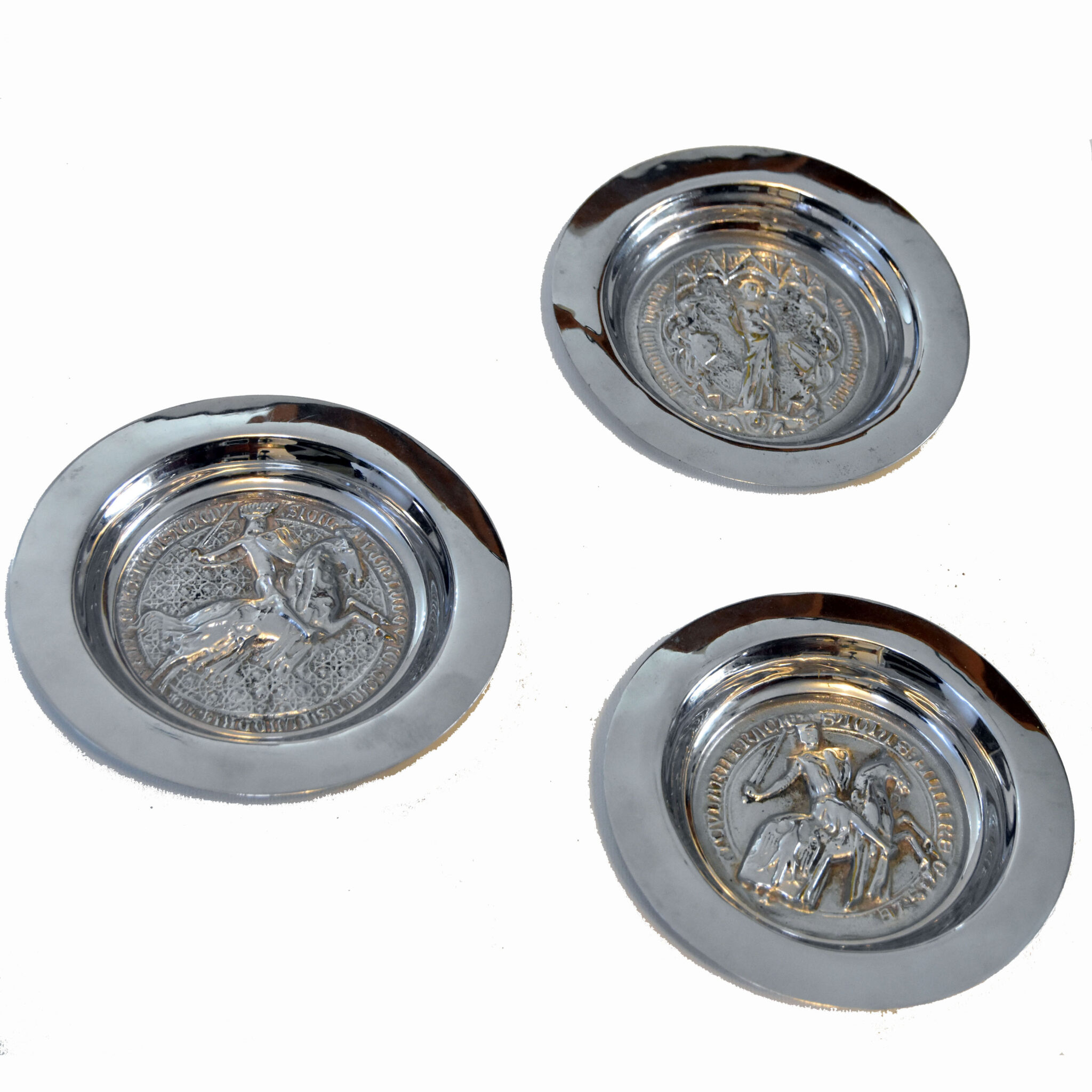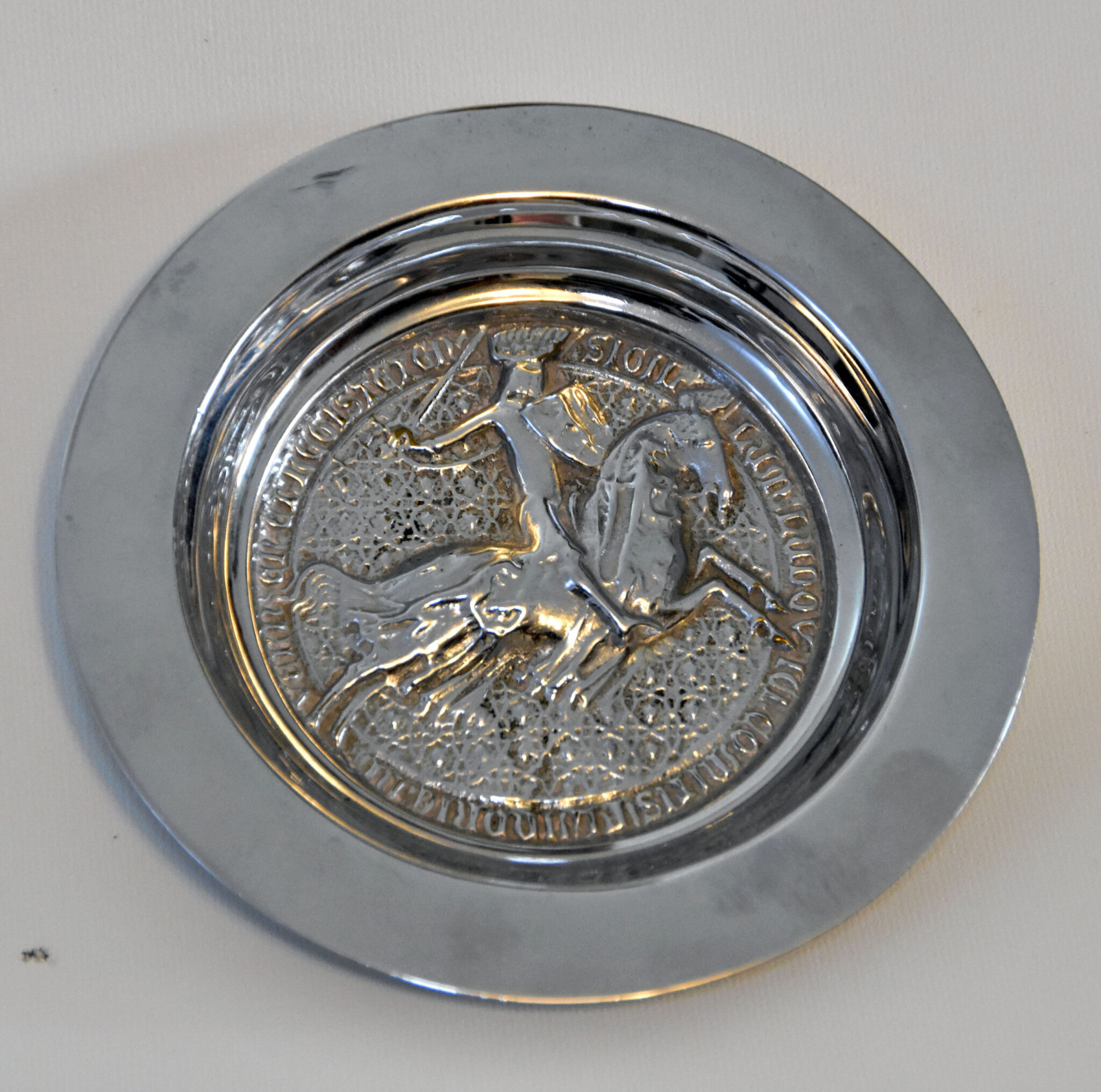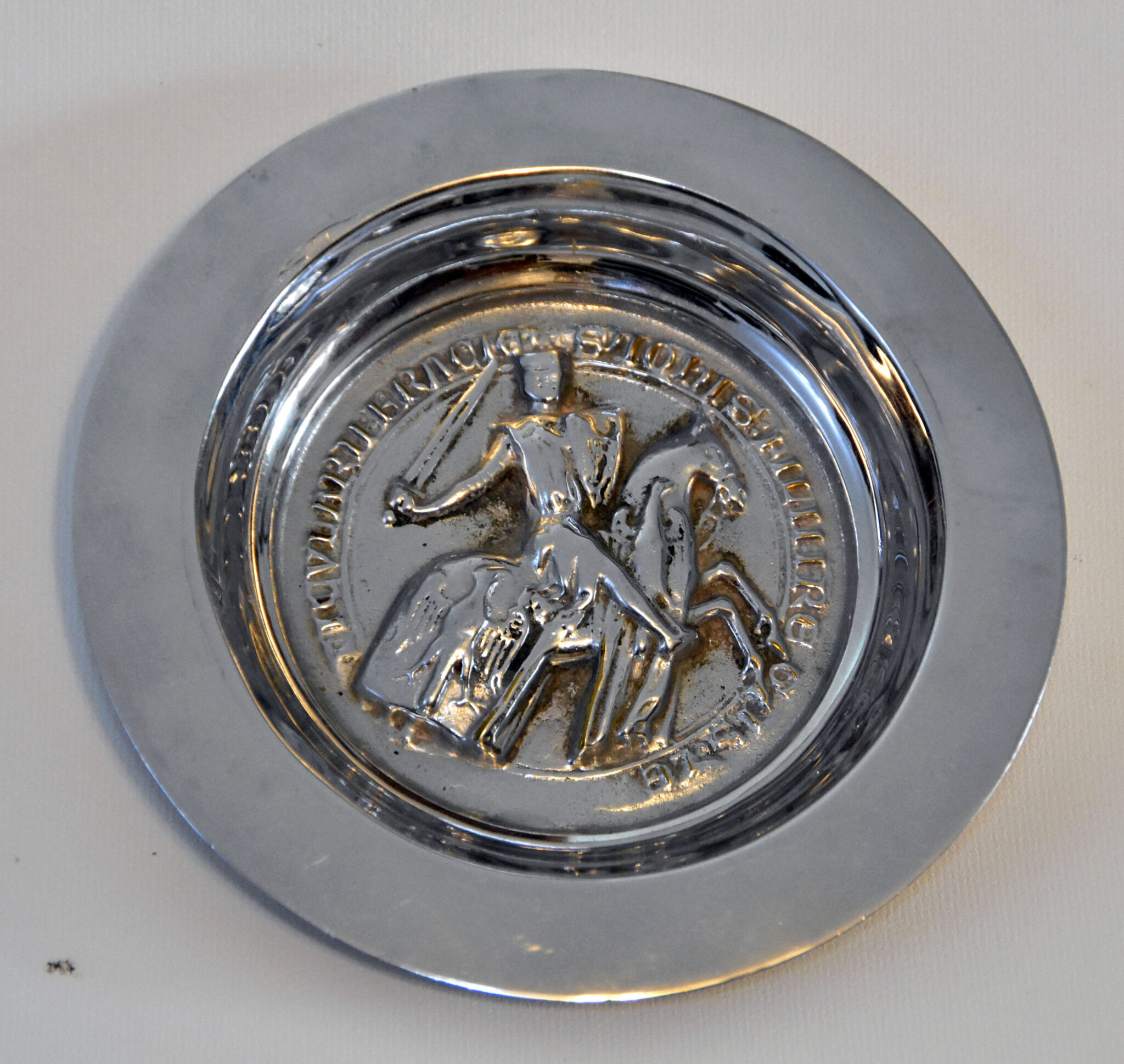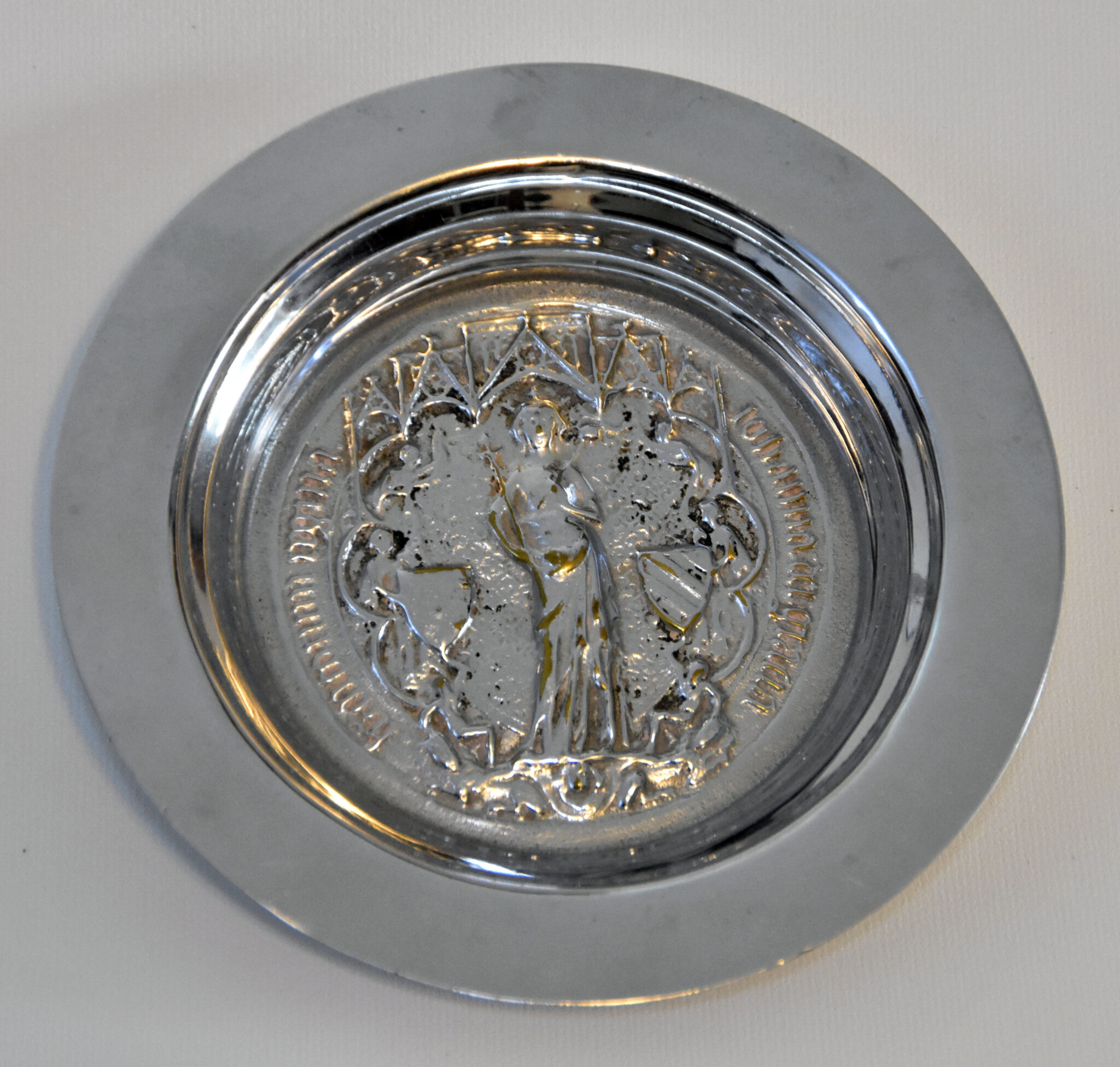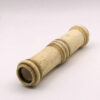Three ashtrays chromed by Sir Edward Elgar (1857-1934) together with microscopy book: Half-Hours with the Microscope by Dr. Lankester;
Stock Number: FG_25008
£300
The book and ashtrays featured here were the property of Sir Edward Elgar (1857-1934), an English composer whose numerous works have become part of the British and international classical concert repertoire. Among his best-known compositions are orchestral works including the Enigma Variations, the Pomp and Circumstance Marches, concertos for violin and cello, and two symphonies. He also composed choral works, including "The Dream of Gerontius," as well as chamber music and songs. He was appointed Master of the King's Music in 1924. Regarded as a pure representative of the Victorian and Edwardian eras, Elgar gained much popularity during the turn of the century. However, after World War I and with the changes in public taste and political atmosphere that occurred, Elgar’s works quickly lost their popularity, resulting in nearly complete neglect from ca. 1920 onwards. Following World War II, and particularly from the 1950s onwards, there has been a renewed interest in his music, and some of his works are regularly performed in concerts and other public events today.
Circa
Ca. 1920
Country of manufacture
UK and Ireland
Description
The provenance of the ashtrays shown here is attributed to the Elgar family (Tennants, 2016). It was published alongside the 1906 edition of Dr. Lancaster’s book, Half-hours with the Microscope (Lancaster, 1863), one of the popular textbooks for Victorian dilettante microscopists. Elgar, in his later years, can serve as a type model for such an amateur. After moving to Hampstead in 1912, he developed a keen interest in microscopy and was fascinated by all things microscopic, including diatoms and even measuring the heart rate of Daphnia. After the death of his wife in 1920, Elgar became even more immersed in his hobbies. With no significant public interest in his musical works and lacking his wife’s support, he detached himself from composition. His daughter later wrote that he inherited from his father a reluctance to “settle down to work on hand but could cheerfully spend hours over some perfectly unnecessary and entirely unremunerative undertaking (Moore, 1984, p. 17). From his early interest in chemistry, which sometimes involved using a laboratory in his back garden, he transitioned during these later years into amateur microscopy. Elgar owned several microscopes, one of which can be seen in his birthplace cottage. He also had a laboratory where he examined prepared slides and specimens that he collected from Hampstead Heath and Highgate Ponds (Elgar Birthplace Museum, 2015). As Compton Mackenzie recalled in his centenary published to mark Elgar’s century of birth, he quotes Elgar’s reflection on his decline in popularity amongst young music critics by commenting that “Not that I care, I take no more interest in music. You’ll find, as you grow older, that you’ll take no more interest in literature. The secret of happiness for an artist when he grows old is to have a passion that can take the place of his art. I have discovered the joy that diatoms can give me. This miraculous world of beauty under the ocean revealed by the microscope is beyond music.” And he went on to expatiate on the exquisite patterns formed by these fossilized algae and the spiritual comfort that observing them brought to mind (Mackenzie, 1957; Wotton, 2013).
Sources
Elgar Birthplace Museum. (2015). Retrieved from The Quekett Microscopical Club: http://www.quekett.org/about/outreach/2015-elgar-public
Lancaster, E. (1863). Half-hours with the microscope; being a popular guide to the use of the microscope as a means of amusement and instruction (1906 ed.). London: R. Hardwicke. Retrieved from https://archive.org/details/halfhourswithmic00lank
Mackenzie, C. (1957, June). Elgar remembered. Gramophone. Retrieved from http://www.gramophone.co.uk/feature/elgar-remembered
Moore, J. N. (1984). Edward Elgar: a Creative Life. Oxford: Oxford University Press.
Tennants. (2016, September 30). Brass Microscope Formally The Property Of Edward Elgar (Lot 2213). Retrieved from Musical & Scientific Instruments, Cameras & Tools: http://www.tennants.co.uk/Catalogue/Lots/348348.aspx
Wotton, R. (2013, June 21). Gosse, Elgar and the wonders of microscopy. Retrieved from Natural History, Creation and Religious Conflicts: http://rwotton.blogspot.co.il/2013/06/gosse-elgar-and-wonders-of-microscopy.html
Ask the Dealer
Dealer information
 Gilgamesh
Gilgamesh
Gilgamesh is a mythological hero from the ancient cultures of West Asia, who embarked on a journey in search of youth and eternal life. Fleaglass Gilgamesh is located in Israel. As an Emeritus Professor of archaeology, I have spent over four decades researching the material culture of the distant past, utilizing the microscope as a powerful research tool. For the past thirty years, I have collected microscopes from the first 300 years of this remarkable instrument's history and have studied the cultural context of their use.
What started as a passion has turned into an obsession, and I now cultivate a nearly unique collection of historical microscopes from West Asia. From time to time, I offer surplus or particularly interesting items from my collection for sale. I am happy to provide free advice to any interested collector. If you would like to receive photos, information, and bibliographic references, or if you wish to discuss the details of the items I have for sale, please feel free to reach out.




